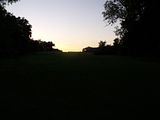I've resized the pictures down to 1024x768 which I suspect is still a bit large still, so I'm going to post the thumbnails. If that's just plain awkward, let me know and I'll put them down to 800x600 and lose any hope of reading the text on the plaques.
Calleva itself was a fairly large trade hub in its day, connecting through to modern St Albans and London in the east and I believe Exeter in the west. The walls that still stand were made around the 3rd century and the town itself was abandoned in the 5th or 6th century. It's not really known why, but the nearby Anglo-Saxon settlement of Aldermaston was founded instead of them taking over the town and its roads for whatever reason. Winchester, the capital of Wessex is only about 20 miles way, which might also explain why activity at Calleva died down. Whatever the reason, no-one ever really found a use for a large walled town on top of a hill(?!) and for 1700 years it was pretty much left to the elements. Which is great for me (also archaeologists), because it's a fascinating place.
Just in the main car park outside the path are these pillars. Not original, nothing engraved on them... I've no idea what they're there for. Look nice though.

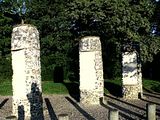
The entrance, with a handy aerial view of the site. Not entirely sure how it's oriented though.
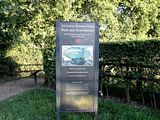
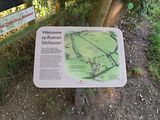
A little way in, the first sighting of the wall itself, through a field of cowbeasties.
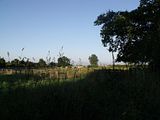
A little further in, looking the other way over the south gate and the inside of the site. There's no orginal buildings left inside Calleva itself; the site is mostly farmland, with a church and a farm being partially inside the walls.


There's been a dig going on over the summer; sadly I couldn't find a better shot and it was very closed by the time I got that. (7:30 pm)
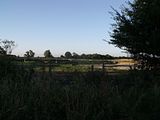
Down the side of the walls. On this side they're still a good 3-4m high. And suprisingly spiky with all thest bits of flint jutting out of them. Possibly one of my favourite shots.
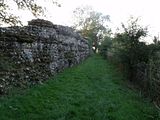
Same place, back on top of the walls.
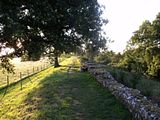
There's these strange little build-outs along this section of the wall. I've no idea why they're here.
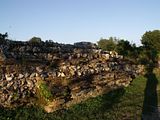
Looking back, the medieval church and the farm that are the only major buildings inside the site.

I heard a two-stroke engine starting up at this point and managed to spot one of the local paragliders taking off.
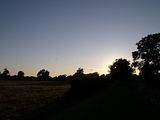
Further along, a piece of wall has fallen clean off sometime in the last millennium or two. Almost ended jup falling down it on my bike.
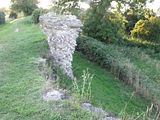
Finally! The north gate.
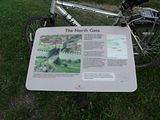

Just a shot or two to show how thick the walls are at the North Gate. The second also shows the difference between the nicer-looking internal sections of the gate and the somewhat spiky outside walls of the town.
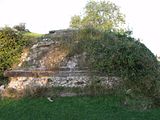
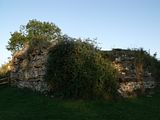
A final shot before leaving the town proper. Just a tree growing on the wall.
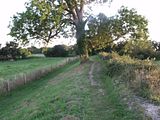
Heading down the road to my favourite section of the site, a view of the outside of the wall again.
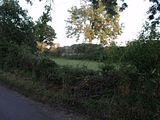
The better part of a mile or so around from where I entered the town, there's one of my favourite places in the world.
Just off of the road, outside the town and now secluded from the road outside and even the noise of the farms nearby, the Ampitheatre these days is both pretty and vaguely unsettling when you're alone.
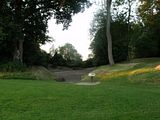
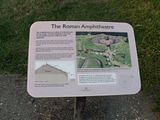
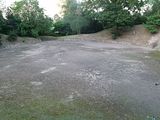
There's a path up the left hand side, up where the seating would have been. These two shots are looking towards the back of the ampitheatre and then to the side, where there's an odd little alcove. There's also one on the side I was on, but the sides are so steep and the alcove is in worse repair, so I didn't want to lean out and take a shot.
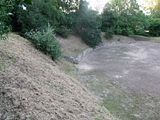

A view from the back of the ampitheatre. This picture with a limited FoV really doesn't do it justice. Standing there, in this near-total silence, looking up at the seating where almost 2000 years ago, 4000+ people watched their plays and their battles is deeply strange. It's like stepping into a ruined church; the history is almost oppressive.

A closer look at the intact alcove bit on the side. I could easily fit into it were I so inclined and it looks like there's at least a hint of a doorway into it. Maybe the equivalent of the wings of a modern theatre?
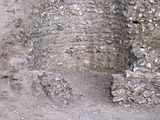
Finally, before leaving, I spotted things that should interest.. uh, someone. Roman drainage!
There's all these little channels around the outside of the arena floor, you can just about see them in some of the other photos.
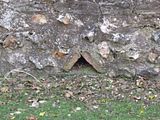
It looks like they all connect to some piping or equivalent behind the seating, as there's these larger drains either side of the way in.
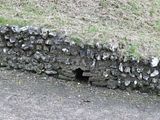
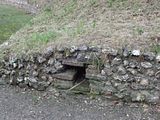
That's pretty much it for the evening, I'm afraid; at this point I was rapidly running out of daylight to take good pictures with. If people are interested, I can take a closer look at some things or head out to the south side of the town as and when.
